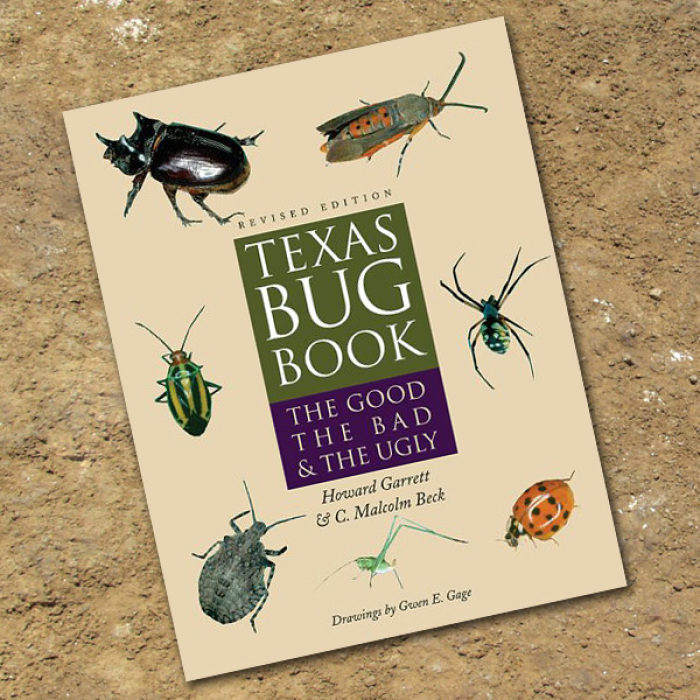
As gardeners, we are faced with challenges every season to make our vegetable gardens as successful, rewarding and productive as possible. By far, other than extreme weather conditions, the biggest challenge I feel we have is dealing with pests. The control of them can make the difference between a good year and a year you quickly want to put behind you.
When it comes to IPM (integrated pest management), one of the things I’ve always said is, “To defeat the pest, you must know the pest.” Having good information on which insects are the “good guys” and which are the “bad guys” is key. TheTexas Bug Book: The Good, the Bad, and the Ugly is a great resource for this task.
The book is written by gardening experts Howard Garrett and Malcolm Beck. Mr. Garrett is a landscape architect, horticulturist, organic gardening program radio show host, Dallas Morning News columnist, and renowned speaker. Mr. Beck is the founder of Garden-Ville Fertilizer Company, writer, and speaker. It needs to be mentioned that most of the listed bugs are not limited to Texas, so this book will benefit organic gardeners anywhere.
The Texas Bug Book is draws on years of observation, practical experience and research using organic gardening methods. The design and layout of the book is fairly straightforward. Rather than grouping the bug listings in various categories (i.e., beetles, caterpillars, etc.), the book takes a “glossary” approach. The listings are alphabetical, so you can quickly pick it up and go right to a particular insect.
Each bug is explained by the following:
1. Common name(s)
2. Scientific name
3. Size
4. Identification
5. Biology and life cycle
6. Habitat
7. Feeding habits
8. Economic importance
9. Natural control
10. Organic control
11. Insight
The photography is striking and beautifully done, quite helpful in identifying the bugs clearly. An occasional black-and-white illustration makes its presence where a photo wasn’t available; and again, most are very well done.
Used almost constantly throughout the book are notes from the authors – “A Howard Story”, and “A Malcolm Story”. On one hand, these personal messages and stories made for a nice break from the bug listings and did have good information within them. This is something you usually won’t get in a standard field guide. On the other hand, they seemed to be a little wasteful in the sense that additional bug entries could have been used in those spots.
The book concludes with three appendixes: Beneficial Insects; Growing Organic Roses, Pecan Trees, and Fruit Trees; and a Basic Organic Program.
The Texas Bug Book is a great guide for identifying and organically controlling most of the common insect pests, as well as identifying the beneficial insects. The value of years of observations is clearly seen in this book, and the authors’ belief in natural pest control wherever possible is clearly shown. It is a must-have for any organic gardener’s library.
The book is published by the University of Texas Press, Austin. It is available through Amazon (starting at $18), or through the University of Texas Press ($20).


















Comments
Log in or create an account to post a comment.
Sign up Log in